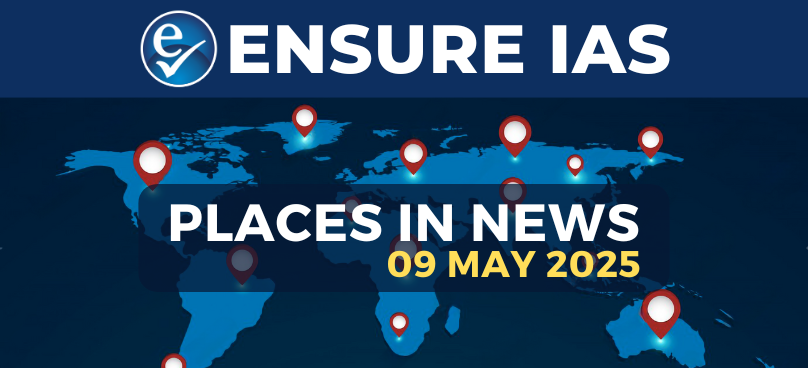- Courses
- GS Full Course 1 Year
- GS Full Course 2 Year
- GS Full Course 3 Year
- GS Full Course Till Selection
- Online Program
- GS Recorded Course
- NCERT (Recorded 500+ Hours)
- Polity Recorded Course
- Geography Recorded Course
- Economy Recorded Course
- AMAC Recorded Course
- Modern India, Post Independence & World History
- Environment Recoded Course
- Governance Recoded Course
- Science & Tech. Recoded Course
- International Relations and Internal Security Recorded Course
- Disaster Management Module Course
- Ethics Recoded Course
- Essay Recoded Course
- Current Affairs Recoded Course
- CSAT
- 5 LAYERED ARJUNA Mentorship
- Public Administration Optional
- ABOUT US
- OUR TOPPERS
- TEST SERIES
- FREE STUDY MATERIAL
- VIDEOS
- CONTACT US
Urban Flooding in India: A Growing Crisis
Urban Flooding in India: A Growing Crisis
India's major cities are increasingly facing devastating floods, resulting in loss of life, livelihoods, and severe economic burdens on governments. A recent study published in Nature reveals a worrying trend: the rapid and continuous expansion of cities into flood-prone areas is a key factor exacerbating these risks.
Causes of Urban Flooding in India
Natural Factors
-
Monsoon Rains: Intense monsoon downpours (e.g., Chennai and Hyderabad) overwhelm drainage systems.
-
Topography: Cities like Bengaluru, with their undulating terrain, experience water accumulation in low-lying areas, worsened by urban development.
-
Cyclones and Storm Surges: Coastal cities like Chennai and Mumbai are vulnerable to cyclones and storm surges (e.g., Cyclone Ockhi in 2017).
-
Soil Characteristics: Clayey soils, prevalent in some areas, hinder water drainage.
-
Sea Level Rise: This amplifies flooding in coastal cities, especially during high tides and storm surges.
-
Climate Change: The increasing frequency and intensity of extreme weather events lead to unpredictable and heavier rainfall patterns (e.g., Kerala floods in 2018).
-
Hills and Slopes: Hill cities like Shimla face rapid runoff due to steep slopes, causing flash floods.
-
Seasonal Variability: Unpredictable rainfall patterns (e.g., in Lucknow) can overload drainage systems.
Anthropogenic Factors
-
Rapid, Unplanned Urbanization: Cities like Gurgaon have expanded without proper infrastructure, leading to waterlogging.
-
Encroachment on Water Bodies: In Chennai, encroachment on wetlands has reduced the city's capacity to absorb rainwater, exacerbating floods.
-
Outdated Drainage: Mumbai's aging drainage system struggles to handle high-intensity rainfall.
-
Poor Waste Management: Clogged drains (e.g., in Kolkata) worsen waterlogging.
-
High Population Density: Delhi's dense population strains drainage infrastructure.
-
Illegal Construction: Structures built along watercourses (e.g., in Hyderabad) obstruct water flow.
-
Lack of Green Spaces: Bengaluru's loss of lakes and green spaces reduces water absorption capacity.
-
Water Mismanagement: Poor coordination (e.g., during the 2006 Surat floods) exacerbates flooding.
Global Perspective and Study Findings
East Asia, particularly middle-income countries like India, is witnessing the highest rate of urban expansion into flood-prone zones. This alarming trend is linked to the growing urbanization of vulnerable areas and the increased use of impermeable concrete, which reduces soil absorption and worsens floods.
Disproportionate Impact on the Poor
The most vulnerable communities, often residing in informal settlements in low-lying areas, bear the brunt of urban flooding.
Governance Challenges
Weak governance and enforcement of environmental regulations have allowed construction in flood-prone areas, further increasing risks.
Solutions
-
Scientific Mapping of Flood-Prone Areas: This is crucial for sustainable urban planning.
-
Improved Stormwater Management: Implementing modern drainage systems and green infrastructure solutions like green roofs, permeable pavements, and rain gardens.
-
Resilient Housing: Building flood-resistant structures, especially for low-income housing.
-
Innovative Solutions: Exploring alternative housing models like stilt houses for riverside communities.
Conclusion
Addressing India's urban flooding crisis requires a multi-faceted approach that tackles both natural and man-made factors. This includes sustainable urban planning, improved infrastructure, and stronger governance to protect vulnerable populations and build climate-resilient cities.


